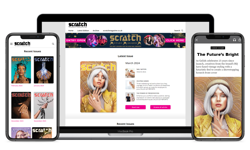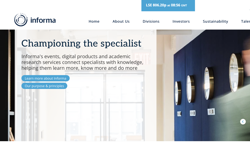
When it comes to building a successful data-driven business in today’s publishing marketplace, says Chief Digital Officer Sharon Cooper of The Economist Intelligence Unit (EIU), it pays to remember your users are both your biggest opportunity and, also, your biggest threat.
As a business providing forecasting and advisory services through research and analysis, such as monthly country reports and multi-year country economic forecasts, that sits within the Economist Group – publisher of The Economist – the EIU knows more than a thing or two about data.
Even so, Cooper stresses, it is not in the business of data but forecasting what it thinks will happen next. Which in today’s low-code / no-code world, which allows clients to do a lot more for themselves, is just as well.
“If clients can take all the same data you can, and they can put it through the same tools and systems you can, where do you add value in the workflow? For a lot of B2B organisations, the real challenge is: where do we fit into the ecosystem now when they can do it for themselves?”, she explains.
“For us, our forecasts are what’s unique – that’s where we add value. So, making sure we focus on that and how that makes a difference to clients, and what we do around that is critical.”
This mindset underpins EIU’s business – from its approach to the source and volume of the data it sources to the content it creates from it, from the design of its recently launched EIU Viewpoint platform to what it chooses to automate (as well as what not to automate).
“We are part of a lot of companies’ decision-making process – not usually the only input, but we will be used to help validate decisions,” says Cooper. “And it’s not just economic data they come to us for. Many clients come to us for economic, political and policy as a lot of companies need to look at all things in the round.”
Managing the vast volume of data that now exists, however, is, she says, “a massive challenge”. Consider real time data, the volume of which is growing fast.
“You can tell how much oil there is in a tanker looking at a photo of that ship from a satellite and the shadow it casts on the sea,” she points out.
“The question is, how do you use that? You could get completely distracted by having all that data, but what value does it have for your business? Data overload is a massive challenge. As is sifting through what out of this data is valuable for what we do versus what is not.”
Data is always changing.
“You’ve got to work out what you need to do your job, how your competitors are using that – how people who are not your competitors right now are using it, too – then make sure you don’t overload yourself with a lot of data that doesn’t make a difference to the story you are trying to tell,” Cooper adds.
With new data sources coming online (live data, especially) data is growing in volume, too.
“It’s about weighing what value it can bring versus what value I can deliver to my client,” she explains.
“We have to be discerning. Does it tell a different story? Does it lend new depths? Will it change the forecast? If it doesn’t make a difference to what we forecast will happen, do we really need it? What value does it add?”
You could get completely distracted by having all that data, but what value does it have for your business?
Meeting client needs
Which is why the EIU’s success depends on a close understanding of its clients’ wants and needs. And expectations around timeliness and granularity are rising fast.
“Clients want more, and more tailored to them,” Cooper continues. “They want things potentially delivered to them in a very tailored way, not as a generic version. So, we have to think of all of this as we go through our new product development processes.”
The EIU’s recently-launched Viewpoint – a platform for the future powered by a new interactive data tool that combines expert political insights, policy analysis, economic outlook and forward-looking forecasts, and proprietary data – is a case in point.
“Expectation of website design now is that everything is as simple as the best B2C experience. People come to B2B with a lot of expectations from everything else in our world,” she notes.
“One of the challenges is trying not to get too fancy. Our clients want the data, they want it quickly, and they don’t want to have to learn. Yes, we could make something much more fancy, but will they thank us for that when they are really busy and want to get to something?”
Cooper’s mantra is: keep the stuff that matters, add the new stuff that makes accessing it easier. And the same added value test applies when it comes to automation strategy.
“Soon after I joined, someone said: ‘You’re going to automate me out of a job, aren’t you?’,” she recalls. “But I hope to automate them into a better job.”
Yes, there is welcome scope to automate the cleaning up of data, processing it to make it ready for analysis, she says. But the emphasis is on putting automation in the hands of the EIU’s analysts – effectively becoming part of them.
“I like the idea of the ‘augmented analyst’ with a whole set of tools at their disposal to be able to tell a better story and to be more accurate in our forecast, and for that forecast to be more accurate earlier as that’s what makes the difference to a client,” Cooper says.
“The sooner we say something is going to happen, the better the business decision they will be able to make. It’s about finding the insight that can’t be found from somewhere else.”

You can hear Sharon Cooper being interviewed by James Evelegh on a recent episode of The InPublishing Podcast, which was sponsored by AdvantageCS, a leading global provider of subscription and membership management software.










